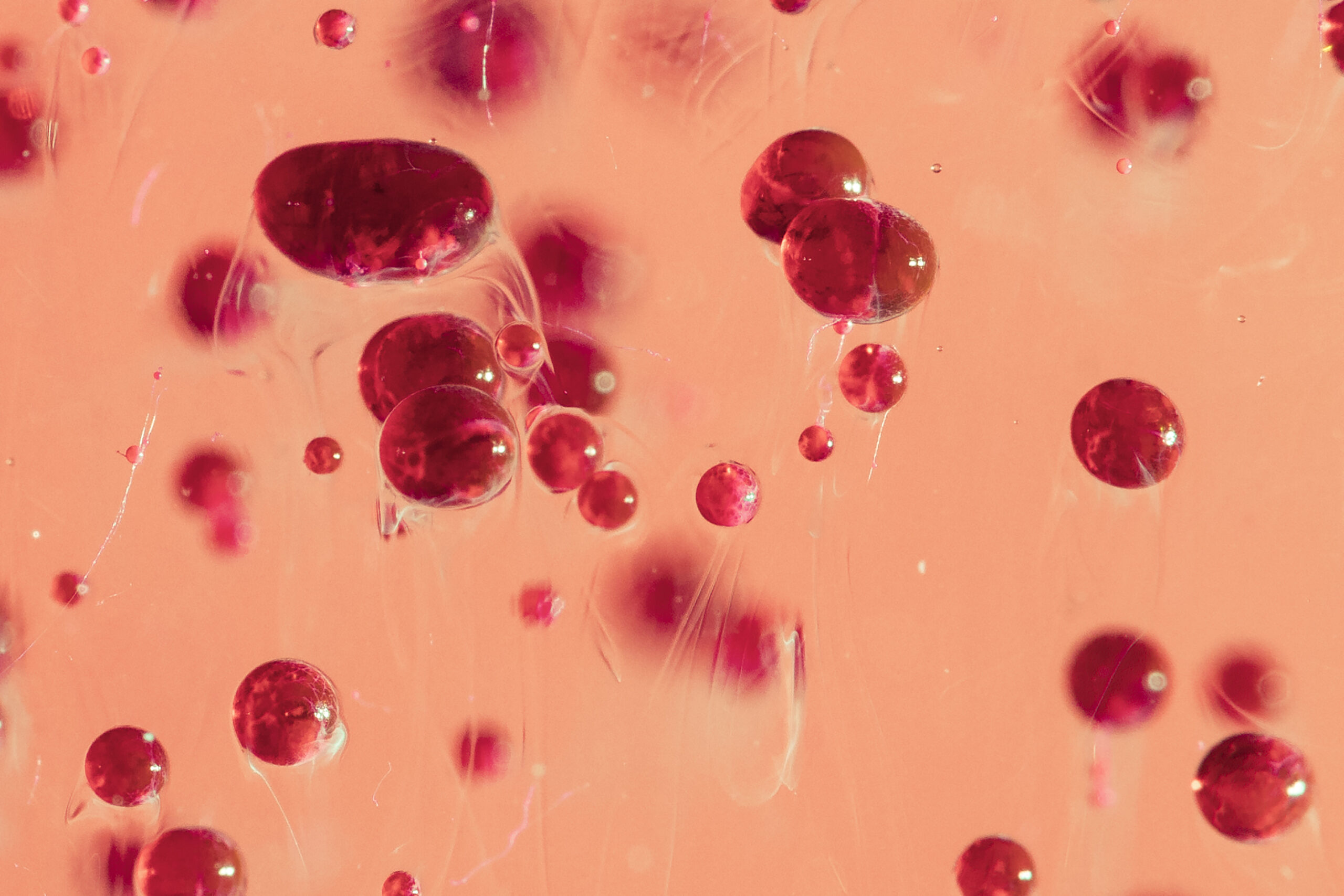Unlocking the Power Within: Understanding Semen Retention

Semen retention, often referred to as "NoFap," is a practice that involves abstaining from ejaculation for extended periods of time, typically for the purpose of improving physical, mental, and emotional well-being. It has gained popularity in recent years due to its potential benefits and its connection to various ancient philosophies and traditions.
The purpose of this article is to offer a comprehensive, step-by-step guide on how to practice semen retention effectively. While it's essential to approach this practice with caution and a clear understanding of its potential benefits and risks, this guide aims to provide practical advice and tips for those interested in exploring semen retention. By following these steps, readers can make informed decisions about whether semen retention aligns with their physical, mental, and spiritual goals.
Importance of Semen Retention for Physical and Mental Well-being
Semen retention, as the name suggests, involves abstaining from ejaculation, either temporarily or for more extended periods. This practice is often associated with mindfulness, discipline, and the belief that the vital energy contained within semen can be harnessed for personal growth and well-being.
Physical Benefits:
1. Increased Energy Levels:

One of the primary physical benefits attributed to semen retention is increased energy levels. Proponents argue that by conserving vital nutrients and energy that are typically lost through ejaculation, individuals can experience higher vitality and motivation. This boost in energy can lead to improved productivity and an overall enhanced sense of well-being.
Furthermore, proponents often emphasize that semen retention can lead to a more robust immune system. They contend that the nutrients and compounds found in semen, such as zinc and various enzymes, are essential for maintaining a healthy immune response. By conserving these vital components through abstinence from ejaculation, individuals may experience increased resistance to illnesses and infections.
Mental Benefits:
1. Enhanced Focus and Concentration:

Semen retention, a practice followed by some people, is said to have various benefits, including improved mental focus. Those who support this practice often mention feeling more alert and clear-headed because they avoid the mental fog that can follow ejaculation. They believe that by staying mentally sharp, they can perform better at work and engage more deeply in creative activities. While experiences vary from person to person, there's a group of individuals who firmly believe in the cognitive advantages of semen retention.
2. Increased Self-Confidence:

Embracing the practice of semen retention requires a significant level of self-discipline that can bring about transformative changes beyond the immediate physical aspect. It's not just about controlling a specific bodily function; it's about developing a broader sense of self-control. This discipline can spill over into various aspects of a person's life, serving as a catalyst for increased self-mastery in other areas.
With this newfound control over their impulses, individuals often discover a heightened sense of self-confidence. This deep belief in oneself can have a ripple effect, radiating positivity and assurance. Whether it's navigating relationships, pursuing career goals, or making everyday choices, this strengthened self-assurance can become a powerful tool. While individual experiences may vary, for many, the discipline of semen retention serves as a foundation for a more empowered life.
3. Emotional Balance:

For many proponents of semen retention, this practice goes beyond its physical aspects and extends into the emotional and psychological realms. Those who commit to this discipline often report significant improvements in their emotional well-being and stability. At the core of this belief is the notion that conserving and directing sexual energy effectively can act as a safeguard against emotional challenges and stressors.
Additionally, this newfound emotional balance can have positive ripple effects on interpersonal relationships. When individuals experience emotional stability, their interactions with others tend to be less reactive and more considerate, fostering deeper connections and mutual understanding.
Relationship Benefits:
1. Deeper Emotional Connection:

While scientific evidence is limited, some individuals practicing semen retention suggest that it can lead to more profound emotional connections in intimate relationships. By channeling sexual energy into their partnerships, they may experience greater intimacy, trust, and overall relationship satisfaction.
The importance of semen retention for physical and mental well-being is a topic that continues to intrigue and inspire many individuals. While scientific research on this subject is ongoing, the anecdotal accounts of those who practice semen retention suggest that it can offer a range of potential benefits. However, it's essential to approach this practice with an open mind, recognizing that its effects can vary from person to person. Ultimately, the significance of semen retention lies in the individual's personal experience and the potential for positive transformation it may offer.
Preparation for Semen Retention
Semen retention is a practice that requires both mental and physical readiness. Preparing adequately is essential to maximize the potential benefits and navigate potential challenges. Here, we delve into the crucial aspects of preparation for semen retention:
A. Mental Readiness:
1. Setting Clear Intentions:

Embarking on the path of semen retention is a decision that warrants thoughtful consideration. Much like any commitment demanding discipline and determination, it's crucial to commence this journey with a clear understanding of your motivations. Establishing a solid foundation of intent ensures that your pursuit is driven by purpose rather than whim.
Begin with Introspection:
Allocate some quiet moments for introspection. Delve deep into your motivations. Are you enticed by the promise of increased energy levels? Curious about the potential for enhanced concentration? Perhaps you're seeking more profound personal relationships or personal growth.
Record Your Intentions:
Consider documenting your reasons, possibly in a journal. The act of writing can provide clarity, and having a tangible record can serve as a potent reminder during challenging times.
Find a Supportive Community:
Connecting with others on a similar journey can be reassuring. Sharing experiences, confronting challenges, and celebrating successes within a supportive community can fortify your determination.
2. Understanding Potential Challenges:

Indeed, as with any commitment that involves reshaping deeply ingrained habits and behaviors, semen retention presents its unique set of challenges. Being proactive in addressing these challenges can enhance the likelihood of success and help minimize potential roadblocks. Here's a closer examination of some of these challenges along with strategies for navigating them:
1. Heightened Sexual Urges:
Abstaining from ejaculation can naturally lead to increased sexual desires. It's essential to recognize these feelings without judgment.
Strategy: Redirect this energy. Engage in physical activities like exercise, meditation, or even simple breathing exercises to dissipate pent-up energy.
2. Moments of Temptation:
There might be moments when the temptation to break the retention commitment feels overwhelming.
Strategy: Revisit your intentions. Why did you start this journey? Reminding yourself of the benefits and reasons can help reinforce your commitment.
3.Skepticism from Others:
Not everyone will understand or support your choice. Some might even express doubt or mock the practice.
Strategy: Cultivate a supportive community. Engage with forums or groups where like-minded individuals share their experiences. Their stories and encouragement can be a source of strength.
4. Mental Challenges:
Your own mind might occasionally rebel, questioning if it's all worth it or if the benefits are real.
Strategy: Keep a journal. Documenting your feelings, experiences, and the changes you observe can offer tangible evidence of the journey's impact.
5. Physical Discomfort:
Some individuals report feeling physical discomfort or tension.
Strategy: Try relaxation techniques. Warm baths, gentle massages, or even yoga can help alleviate physical discomfort.
6. Potential Emotional Rollercoasters:
Regulating and channeling a potent energy source might occasionally lead to emotional highs and lows.
Strategy: Stay grounded. Practices like meditation and mindfulness can help maintain emotional equilibrium.
7. Fear of Missing Out (FOMO):
Some may feel they're missing out on sexual pleasures or experiences.
Strategy: Reframe the perspective. Understand that you're not denying pleasure but rather choosing a different path for perceived benefits.
By being aware of these challenges and having strategies in place to address them, you can navigate the path of semen retention with greater resilience and determination. Remember that individual experiences may vary, and it's essential to listen to your own body and intuition throughout the journey.
B. Physical Readiness:
1. Maintaining a Healthy Lifestyle:

To prepare for semen retention, it's crucial to maintain a healthy lifestyle. This includes getting adequate sleep, staying hydrated, and avoiding excessive alcohol or substance use. A well-rested and nourished body is more likely to respond positively to semen retention practices.
Your diet plays a significant role in your overall well-being and can impact your ability to practice semen retention effectively. Incorporate a balanced diet rich in nutrients, including zinc and other essential vitamins and minerals. Regular exercise can also help you manage stress, maintain physical health, and redirect excess energy positively.
2. Reducing Stress:

Stress can be a significant obstacle to semen retention. High-stress levels may lead to increased sexual urges and make it more challenging to maintain self-control. Incorporate stress-reduction techniques into your daily routine, such as meditation, yoga, deep breathing exercises, or mindfulness practices. These methods can help you remain calm and focused on your semen retention goals.
In conclusion, preparing for semen retention involves both mental and physical readiness. Setting clear intentions, understanding potential challenges, and maintaining a healthy lifestyle are essential steps to ensure a successful semen retention practice. Remember that semen retention is a personal journey, and your experience may vary. It's essential to be patient with yourself and seek support from healthcare professionals or experienced mentors if needed. With the right preparation and mindset, semen retention can be a valuable practice for enhancing physical and mental well-being.
Techniques for Semen Retention
Semen retention is a practice that involves abstaining from ejaculation to harness the potential physical and mental benefits it may offer. To embark on this journey successfully, individuals can explore various techniques and strategies to aid in semen retention. Here, we outline some effective techniques to help you get started:
1. Mindfulness Meditation:

Practicing mindfulness meditation can be a powerful tool for semen retention. By becoming more aware of your thoughts and bodily sensations, you can gain better control over your impulses and sexual urges. Regular meditation sessions can enhance your self-discipline and mental clarity, making it easier to practice semen retention.
2. Kegel Exercises:

Kegel exercises are a set of pelvic floor muscle exercises that can help strengthen the muscles responsible for controlling ejaculation. By improving your pelvic muscle control, you can delay or prevent premature ejaculation and gain greater control over your sexual response.
3. Breath Control:

Learning to control your breath can be instrumental in semen retention. Deep, slow breathing techniques can help you redirect sexual energy and calm your nerves when faced with strong sexual urges. By focusing on your breath, you can maintain control over your impulses and extend your retention periods.
4. Visualization and Affirmations:

Visualization techniques can help you maintain focus on your semen retention goals. Create mental images of the benefits you hope to achieve, such as increased energy, enhanced focus, or improved self-confidence. Positive affirmations can reinforce your commitment to semen retention and help you stay motivated.
5. Distracting Techniques:

When faced with strong sexual urges, distracting yourself with other activities can be effective. Engage in hobbies, read a book, take a cold shower, or immerse yourself in a challenging task to divert your attention away from sexual thoughts.
6. Seeking Support and Accountability:

Sharing your semen retention journey with a trusted friend, partner, or support group can provide accountability and encouragement. Having someone to confide in can make it easier to overcome challenges and stay committed to your goals.
7. Progress Tracking:

Keep a journal to track your progress in semen retention. Record your experiences, challenges, and any notable changes in your physical or mental well-being. Monitoring your journey can help you stay motivated and identify patterns or improvements over time.
Semen retention is a practice that requires dedication, discipline, and self-awareness. By incorporating these techniques into your daily routine and customizing them to suit your individual needs, you can work towards experiencing the potential physical and mental benefits associated with semen retention. Remember that the journey is personal, and there may be ups and downs along the way. Stay patient, stay committed, and seek support when needed to maximize the positive impact of semen retention on your life.
Dealing with Potential Challenges in Semen Retention
Embarking on a semen retention journey can be a transformative experience, but it's essential to acknowledge that it comes with its own set of challenges. To ensure a successful and sustainable practice, individuals must learn how to manage these hurdles effectively. In this article, we will explore three significant challenges associated with semen retention and offer practical strategies for overcoming them.
A. Managing Sexual Frustration
One of the most commonly encountered challenges during semen retention is sexual frustration. When abstaining from sexual release, individuals may experience increased sexual tension, leading to discomfort and distraction. To manage this frustration:
1. Channel Your Energy:

Engage in physical activities such as exercise, yoga, or meditation to redirect your sexual energy toward more constructive outlets. This can help dissipate tension and improve focus.
2. Set Goals:

Establish clear goals for your semen retention practice. Knowing why you're undertaking this journey and what you hope to achieve can provide motivation and help you stay focused during challenging times.
B. Coping with Nocturnal Emissions (Wet Dreams)
Nocturnal emissions, commonly known as wet dreams, are involuntary ejaculations during sleep. While they may seem like setbacks in semen retention, they are entirely natural and often beyond one's control. Here's how to cope with them:
1. Acceptance:

Understand that wet dreams are a normal physiological response, and they do not negate the benefits of semen retention. Avoid feelings of guilt or shame, as they can be counterproductive.
2. Sleep Hygiene:

Improve your sleep environment and habits. Reducing stress, maintaining a regular sleep schedule, and avoiding stimulating activities before bedtime may help reduce the frequency of wet dreams.
C. Addressing Psychological and Emotional Hurdles
Semen retention can sometimes bring to the surface psychological and emotional challenges that individuals may need to address. These may include anxiety, stress, or unresolved emotional issues. Here's how to navigate these hurdles:
1. Seek Professional Help:

If you find that semen retention is exacerbating underlying emotional or psychological issues, consider seeking support from a therapist or counselor. Professional guidance can be invaluable in addressing these challenges.
2. Journaling:

Keep a journal to document your feelings and experiences during semen retention. This can help you identify patterns and triggers for emotional and psychological challenges, allowing you to work through them more effectively.
3. Self-compassion:

Be kind and patient with yourself throughout your semen retention journey. Understand that it's normal to encounter emotional and psychological hurdles, and they can serve as opportunities for personal growth and healing.
Semen retention is a practice that offers numerous potential benefits, but it is not without its challenges. Managing sexual frustration, coping with wet dreams, and addressing psychological and emotional hurdles are all part of the journey. By employing the strategies outlined in this article and maintaining a commitment to self-awareness and self-improvement, individuals can navigate these challenges and reap the long-term rewards of semen retention with greater ease and success. Remember that everyone's journey is unique, and it's essential to adapt these strategies to your specific needs and circumstances.
Embracing Semen Retention: A Path to Personal Growth and Well-being

In a world filled with countless self-improvement techniques and practices, semen retention has emerged as a topic of growing interest and discussion. Often associated with ancient Eastern traditions and spiritual practices, semen retention is gaining traction as a means to enhance personal growth and overall well-being. As we conclude our exploration of this intriguing concept, we'll recap its importance and benefits, offer encouragement for those considering embarking on this journey, and share our final thoughts on how semen retention can contribute to personal growth and well-being.
Recap of the Importance and Benefits of Semen Retention
Semen retention is the practice of abstaining from ejaculation, either temporarily or for more extended periods. It's essential to emphasize that this practice isn't rooted in shame or suppression of natural instincts. Instead, it's about understanding the profound energy and vitality contained within semen and harnessing it for personal development.
1. Physical Benefits:

Semen is not just a carrier of life but also a reservoir of vital nutrients, including enzymes, proteins, minerals, and more. When individuals practice semen retention, they allow their bodies to reclaim and utilize these essential nutrients. This act of conservation often results in a noticeable surge of energy. Instead of feeling depleted after ejaculation, many practitioners describe experiencing a sustained zest for life and increased vitality.
From a physical perspective, this boost in energy isn't merely about feeling more lively; it also contributes to improved performance. Many proponents have reported enhanced stamina during workouts, greater physical endurance, and even faster recovery times following strenuous activities. It's as if the body, fueled by the retained nutrients, operates at a higher capacity, enabling individuals to tackle challenges with increased vigor and enthusiasm.
2. Mental Clarity:

The journey of semen retention often leads to transformative experiences, with one of the most commonly reported benefits being the enhancement of mental faculties. By preserving what many consider to be a vital life force, practitioners frequently notice a significant sharpening of their cognitive functions, such as focus and clarity.
Whether it's solving complex problems, immersing themselves in creative projects, or simply being more attentive in daily interactions, improved mental clarity can be a game-changer for many on this path.
3. Emotional Balance:

Semen retention offers more than just physical or cognitive benefits; it invites individuals to explore the intricate realm of their emotions. By channeling and conserving this potent energy, practitioners frequently describe experiencing heightened emotional depth and clarity. This newfound connection enables them not only to identify but also to comprehend their feelings with a nuance that may have eluded them previously.
Such profound understanding can lead to improved responses in emotionally charged situations, fostering a sense of stability and balance. As they continue on this journey, many discover that their emotional world, once turbulent or misunderstood, begins to unfold with greater lucidity and coherence.
4. Spiritual Growth:

For those on a spiritual journey, semen retention is often seen as a means to channel energy towards higher spiritual goals. It is believed to promote a deeper sense of connection with one's inner self and the universe.
CONCLUSION
In conclusion, semen retention is a practice that holds the potential to contribute significantly to personal growth and overall well-being. By conserving and channeling vital energy, individuals can experience physical, mental, emotional, and even spiritual benefits. However, it's important to approach this practice with mindfulness, respect for oneself, and a willingness to adapt it to your individual needs and goals.
As you embark on your semen retention journey, remember that personal growth is a lifelong process. Be patient, stay committed to your goals, and never stop exploring the limitless potential within you. Whether you are drawn to semen retention for its physical, mental, or spiritual benefits, the path you choose can lead to a deeper understanding of yourself and a greater sense of well-being. Embrace the journey, and may it bring you the fulfillment and growth you seek.






























